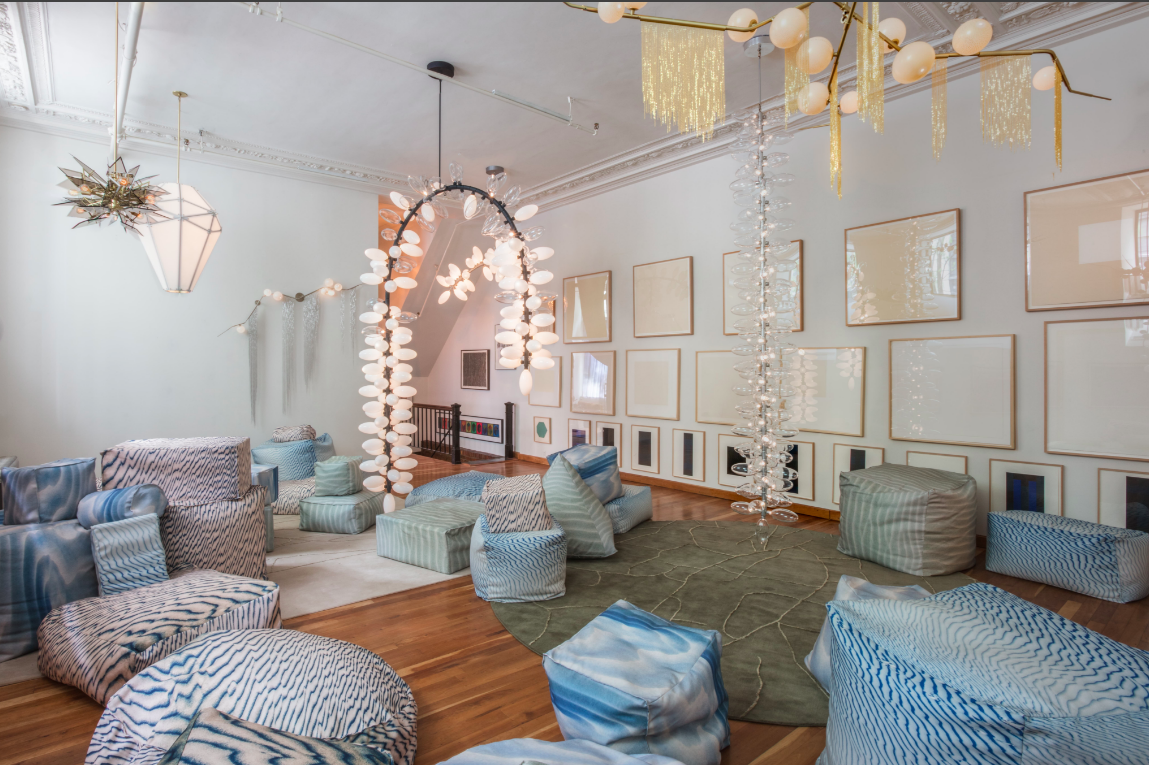On its 40th anniversary, UrbanGlass still proves a necessary resource for New York's creative community.
Maybe you've never heard of UrbanGlass. But chances are, you've seen a thing or two that was made there. The crystalline bulbs of a Lindsey Adelman chandelier, perhaps, or the complex cubic structures of a Thaddeus Wolfe vessel. Or, maybe you gaped at the magnificent meandering glass sculptures that Tauba Auerbach showed at Paula Cooper gallery in 2015. In the 17,000-square-foot studio in Fort Greene, Brooklyn—the most expansive glass-making facility in the country—hundreds of contemporary artists and designers are making work in the increasingly popular medium.
But glass hasn't always been an accessible material to experiment with—particularly in a city where having kilns, furnaces, and flameworking shops (not to mention the square footage to house all that)—is no small feat. In fact, until the mid-20th century, glass could only be used by those who had access to large-scale factories. This was precisely the situation that drove three art school graduates—Erik Erikson, Richard Yelle, and Joe Upham—to open the studio (then called the New York Experimental Glass Workshop) in 1977 at the dawn of the studio glass movement.
"When they moved to New York there were no glass studios and setting one up as a single artist was impossible," explains Cybele Maylone, the studio's executive director. "So they created a communal studio space on Great Jones Street [in Manhattan] that gave artists access to the studio, facilities, community, and knowledge they needed to work with glass. That's still very much at the heart of what we do, and the need has only gotten more pronounced as New York becomes a more challenging place for artists to live and work."
In the 40 years since its founding, the studio has hosted an impressive array of artists and designers. Glass pioneers like Tootz Zinsky and Dale Chihuly worked there in the early 1980s alongside contemporary artists like Kiki Smith and Lynda Benglis, who began incorporating glass into their practice. In the 1990s, when they moved the studio to the more expansive spot in Brooklyn where it remains today, artists like Matthew Barney and Robert Rauschenberg could be found there, pushing their work into a different realm with the material. More recently, as the studio glass movement has bled into the design world, product and industrial designers like Lindsey Adelman, Jeff Zimmerman, Thaddeus Wolfe, and Misha Kahn have brought their design practices into the studio. And, as New York's lighting scene explodes, Brendan Keim—a lighting designer at West Elm—taught a recent sold-out class on making fixtures.
While West Coast cities like Seattle have long been considered the national hubs of glassmaking, UrbanGlass's varied equipment makes it a destination for glassmakers across the globe. But those amenities aren't just roped off for practicing artists; anyone can enroll in a course to learn the craft among these masters.
Ceramics designer Cody Hoyt recently began classes at UrbanGlass, hoping to push his practice with use of the new material. "I’m using my previous experience with ceramics as a practical entry point for glass," he says. "There is a significant amount of overlap between the two technically and aesthetically. As the process unfolds, its exciting to work through the tension of how a flat two-dimensional idea becomes form and occupies space as a functional object or sculpture. Glass reflects and transmits light, which adds a new dimension for me, very different from ceramics."
"You have artists making work for a Chelsea gallery alongside designers making lighting alongside a Pratt student alongside an art school graduate just trying to figure things out," says Maylone. "There's a really rich dialogue that happens in a studio like this because of that exciting mix you don't see anywhere else."
Adelman, who began a long collaboration with glass artist Michiko Sakano in the early 2000s, calls the creative cross-pollination "truly wonderful." Notably, she says, "You can also gauge the interest of a project early by seeing if a crowd gathers around in the making."



